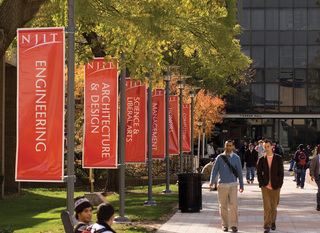Document Type
Thesis
Date of Award
5-31-1989
Degree Name
Master of Science in Electrical Engineering - (M.S.)
Department
Electrical Engineering
First Advisor
Fidel Morales-Moreno
Second Advisor
Yeheskel Bar-Ness
Third Advisor
Joseph Frank
Abstract
Binary partial-response channels with transfer functions (1+D), (1-D) and (1 — D2) are intersymbol-interference channels which find applications in baseband data communications and magnetic recording systems (tapes, discs, compact discs, etc.). In this thesis we develop a coding technique for improving the reliability of digital transmission over noisy partial-response channels with the above transfer functions. We do so by introducing a new concept, called matched encoding, which arises in the context of trellis coding for channels with memory.
We use inner and outer trellis coding of the partial-response channels. The inner codes called matched inner coset codes, are nonlinear and of minimum complexity and are used to ensure proper synchronization of the received signal. Outer codes, called matched outer codes, are linear convolutional codes and are used for error control. In this form good coded partial-response channels are obtained using computer search procedures for overall code rates of 1/4, 1/6, and 1/8. The reported codes are best, within a set of codes, in that the bit error rate is minimized for the AWGN channel and for given receiver complexity.
The reported coded channels achieve coding gains at least 3 dB better than with the Wolf and Ungerboeck techniques. Our approach did not include rates 2/3 and 3/4 which yield smaller bandwidth expansions. The generalization of our approach to these rates is left for future work.
Recommended Citation
Yalamanchili, Kumari, "Trellis coded partial-response channels" (1989). Theses. 2944.
https://digitalcommons.njit.edu/theses/2944




